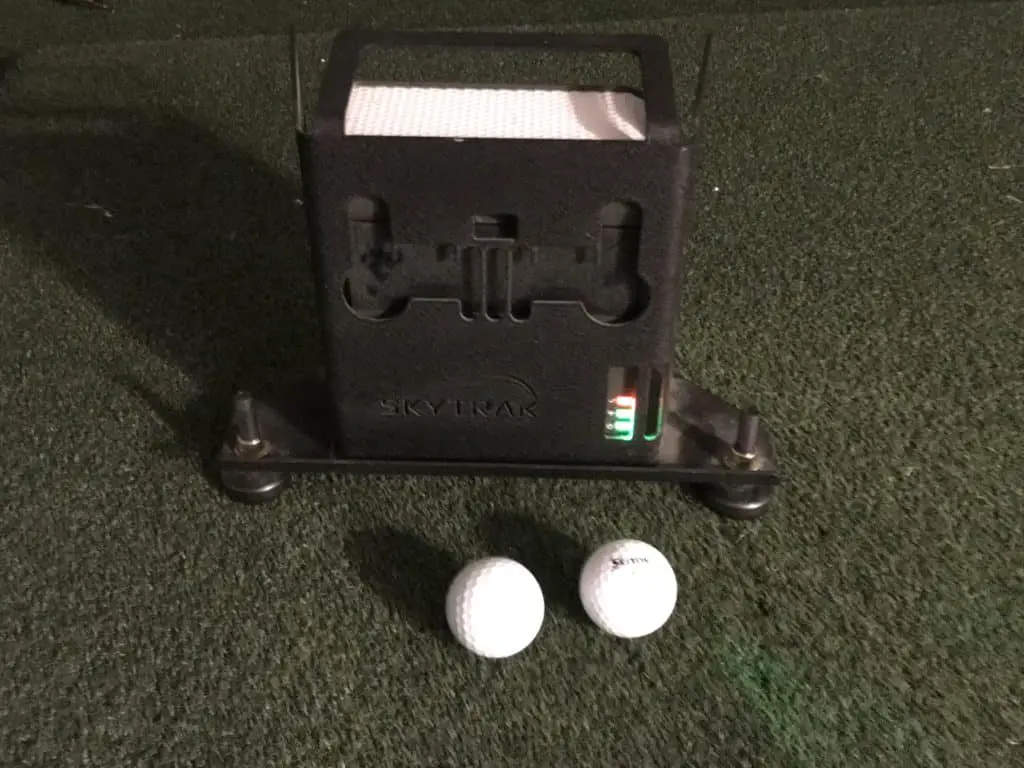One of the great things about being a golfer today can also be one of the more difficult things!
Deciding what clubs are best for your game can be confusing and difficult!
The club options range from drivers, to fairway woods, to hybrids all the way down to what wedges a golfer should carry.
In the old days a golfer might carry a pitching wedge and a sand wedge and the standard driver, 3 wood, iron and putter combination.
However, now when it comes to wedges there are additional options such as gap wedges and lob wedges that can be added to the pitching wedge and sand wedge.
One of the factors influencing the decision are the speed and firmness of the greens at many courses today.
Greens roll faster than ever and the contours around the green on some of the newer courses present challenges that may not have existed 50 years ago.
This is where it is important to get your clubs set up just right for your game.
Also consider that more and more golfers are hitting long drives that may leave the golfer inside of 120 yards on just about every par 4 and par 5 that they face that day.
Below, I will dive into the following topics to help you answer what wedges do I need!
- What are your wedge options?
- How to measure what is best for your golf swing and game?
- What factors should influence your decisions?

What are your wedge options?
There are almost too many options: 48, 50, 52, 54, 56, 58, 60, 62, 64! Gone are the days of just playing the pitching wedge and the sand wedge. The pitching wedge is generally around 48 degrees and the sand wedge around 56 degrees.
There are several problems with this setup of just a 48 and a 56:
- First, there is too big of a gap (8 degrees) between the pitching wedge and sand wedge. The standard loft difference in all of your irons is around 4 degrees. These leaves a gap in your distance control and unless you are good at taking some speed off your of your pitching wedge, you can find yourself in some difficult positions on the the course. The goal on anything inside of 100 yards should be to get it inside of at least 20 feet.
- Second, you lack some loft around the greens. With the speed of green in addition to many greens being firm, unless you are good at adding loft and opening up a 56 degree wedge, you need a lob wedge that is at least 60 degrees. The 60 degree club allows you to make less manipulations to send the ball high enough to get it to stop in time. If you short side yourself and have to hit over a bunker or to an elevated green that extra loft will make a big difference in the end result.
- Third, when you are inside 120 yards and more specifically 100 yards, it is time to score. Having to make major changes and not giving yourself the best chance to hit it close will lead to lost opportunities and higher scores than necessary.
I would highly recommend making sure you have a minimum a lob wedge and possibly even a gap wedge in here.
For example, you could built your wedges at the following lofts:
- 48 degree pitching wedge
- 52 degree gap wedge
- 56 degree sand wedge
- 60 degree lob wedge
This setup provides a perfect 4 degree difference between every club. You will have zero gaps in your wedges and it will have a similar setup to the rest of your irons.
A second option includes carrying the following wedges:
- 48 degree pitching wedge
- 54 degree sand wedge
- 60 degree lob wedge
The golfer with this setup needs to be able to hit a variety of shots as he or she will come across shots where one needs to hit a little 48 or take something off of the 54.
This is actually my setup as I feel comfortable hitting these shots and enjoy hitting a lower shot with enough spin to stop the shot. I also play in a lot of wind so taking something off of a wedge and keeping it lower can often help me be more precise.
This allows me to also carry a 4-9, 3 wood, hybrid and a driver. With the gap between the 9 iron and pitching wedge there is an additional club that could also be considered a wedge, but in all reality I am carrying a 3-9 the numbers just have been altered by manufactures to help us feel like we are hitting the ball further.
When to use a 60 degree wedge?
When to use a 56 degree wedge?
Final verdict
Are you comfortable hitting shots with your wedges that are half swings or 3 quarter swings and being precise with your distance control? Then you can go with the 3 wedge setup. If you want to be able to make more a full swing, then you will want to go with the 4 wedge setup.
One last addition once could make is the 64 degree lob wedge. I have felt that I can get the ball plenty high with 60 degrees, so I haven’t been tempted to add the 64 degree lob wedge.
Did you know there is way that even amateurs can map their bag and decide what is best for their game?

How to measure what is best for your golf swing and game?
There are many wedge options on the market. From manufacturer to the loft to the bounce of the club. These can be difficult decisions to make.
However, I would highly recommend having your own launch monitor to measure your distances with each wedge and to assess your ability to hit precise distances.
3 wood vs 3 hybrid: which one should I carry?
The game of golf is changing for the better. What was once only a dream for most amateur golfers has not become a reality and affordable.
There are several quality options for your own launch monitor to help determine what club is best for your game. You need to have the right setup with wedges if you are going to reach your max potential as a golfer.
With the launch monitors list below, you can now test in the comfort of your own home, at the driving range or even on the course with a launch monitor of your own.
Knowing key data such as club speed, ball speed, launch angle, spin rate and other key data provided by these launch monitors can be a game changer.
The professional golfers of today all have access to some great technology including launch monitors to help measure their swing and know their numbers.
Can an amateur use this same or similar technology for game improvement? Yes, absolutely and I would highly recommend it.
In today’s golf world, even amateurs can have access to amazing technology and data with the technology now available and know the distance they hit their irons and all of their clubs.
This can help you map out your bag and have with pretty quality precision the distance you hit each club.
Not only can this help with a wedge, but you can carry this over to your irons and deciding if you want fairway woods or more hybrids in your bag.
Even if you aren’t going to go all out and build an indoor golf simulator like I did (see below), you can still pick up a launch monitor at a reasonable price and use it in your indoor net or taking to the course or driving range with you! Getting the right club setup for you whether it is a 3 wood, driver or wedge can help you shoot lower scores!
Knowing numbers like spin rate, ball speed, spin axis and other key information is vital to your growth. Sharing these numbers with your instructor can be helpful and help with equipment selection as well.
I would recommend one of the three launch monitors listed below:

Here is how you can assess what wedges:
Take your current wedges and hit 10 shots, close to full swing with each club:
- Calculate the mean average for each club.
- Write down what was the furthest and what was the shortest.
Next, take your current wedges and hit 10 shots with a 3 quarters swing. Once again:
- Calculate the mean average for each club.
- Write down what was the furthest and what was the shortest.
Here is an example of my bag mapping with my wedges:
| Wedge | Carry Avg Distance (Full Swing) | Carry Avg Distance (3 Quarter Swing) |
| 48 Degree | 125 | 115 |
| 54 Degree | 105 | 95 |
| 60 Degree | 85 | 75 |
If I land in a distance somewhere between these distances charted out I have two options. Try to add some speed to one of my swings above or take a bit off and find the difference.
Having the 10 yard gaps between the different swings with the different wedges allows me to score. At one point I carried a 48, 56 and 60 and fought the distance right around 110 yards. Adding the 54 degree has helped eliminate this gap.
What factors should influence your decisions when selecting wedges?
Keep in mind that on an average 18 hole round of golf 60% of the shots occur within 100 yards of the hole. Many golfers spend hundreds of dollars on a new driver, but do not spend the time giving serious consideration to what wedges are going to help them score the best.
The fastest way to lower your scores is to be very good inside 100 yards. The good news is that it doesn’t take a ton of speed, athletic ability or strength to be a good wedge player.
Instead, it takes the right equipment (club set up) and the right amount of practice. I play with plenty of senior golfers who are just pure money once they reach 75 yards and in.
You too can become that player with knowing your distancing, having the right setup with wedges, and practicing a good amount of time.
The last factor to take into account is the amount of bounce on the wedges. I will start off by saying that bounce is your friend.
It will prevent the club from digging into the ground and give you a greater margin for error. Utilizing the bounce in your short game will be essential to limiting those shots that only fly 3 yards when trying to hit it 20 yards.
When in doubt go with a higher level of bounce unless you are golfer that takes a very small divot.
Check out this video on using the bounce:
You have to make sure your bag is set up to play your best round and shoot your lowest score. You might want 16-17 clubs to choose from in your garage, basement, or car.
We know you can only carry 14 total clubs for a round of club, but having options of taking hybrids out and replacing them with wedges or having the opportunity to switch clubs in and out can help you as you play different length courses and different styles of courses.
What are hybrids and how can they help your game?
Be prepared when you get to the course and set yourself up for success!
My Secret To Golf Improvement
Let’s face it, in order to get really good at golf, we must practice frequently. Especially with the wedges. We must spend a good amount of time fine tuning your distances, loft and overall spin!
About three years ago, I made the leap and invested in a golf simulator build for my garage.
I went with a SkyTrak Launch Monitor and the TGC software and can now play over 100,000 courses including Augusta, Pebble Beach, Bethpage Black, Whistling Straits. St. Andrews and many other of the top 100 courses in the world.
This golf simulator setup, which is more affordable that you might imagine, has been a game changer. I can now play golf everyday of the year regardless of rain, snow, cold weather or time of day.
I can practice or play rounds of golf. I can stand in the 11th fairway at Augusta and with the auto-rewind feature I am able to practice my approach shots from various differences.
Simple want to add a hitting mat? Here are three options!
It is worth checking out through Rain or Shine Golf as they offer some incredible packages along with financing offers that are difficult to beat.
Some direct links to Rain or Shine Golf for pricing and financing:

Take Action – What You Can Do Today to Get Better
What does this mean for you? I believe in the following recipe to get better:
1 – Improve your motion in the golf swing by identifying a golf instructor. Here are some options:
Here is a list of golf instructors that we have reviewed:
2 – Train to swing faster and improve your swing speed. Here are some options:
Looking to gain more Speed and Distance in your swing. Two Options:
3 – Understand course strategy and work to break through your next barrier. Here is a series on breaking through:
We have provided guides on how to break 100, 90, 80 and 70. Check out more below, if interested.
4 – Practice Frequently
Did you know that I build a golf simulator in my garage and have played over 500 rounds of golf on my SkyTrak system? It has been a game changer and one worth checking out. Here are some of my other posts on golf simulators frequently asked questions:
- Is a Golf Simulator Worth It?
- How to Build a Golf Simulator?
- What is the Best Golf Simulator?
- Golf Simulator Accessories?
- How to Build a Golf Simulator for under $7000
- Top 11 Reasons to Buy a SkyTrak
- How to Build a Golf Simulator for Under $1000
- Why Build A Golf Simulator?
- What Space is Needed?
- Can A Golf Simulator Improve My Game?
- How Much Does A Golf Simulator Cost?
- Don’t Forget to Check out our 15 best golf swings of all time.
